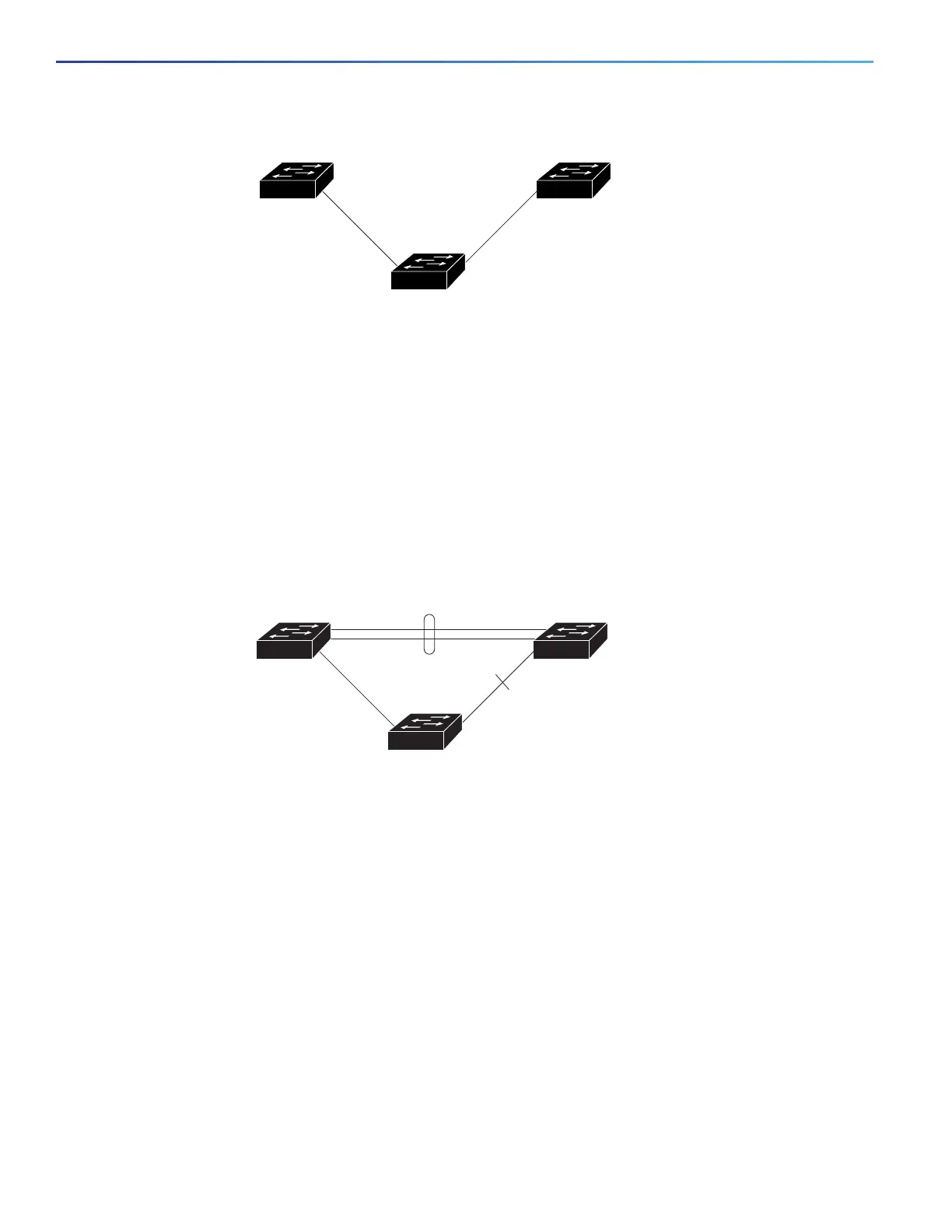378
Configuring FlexLinks and the MAC Address-Table Move Update
Information About Configuring the FlexLinks and the MAC Address-Table Move Update
Figure 57 FlexLinks Configuration Example
If a primary (forwarding) link goes down, a trap notifies the network management stations. If the standby link goes down,
a trap notifies the users.
FlexLinks are supported only on Layer 2 ports and port channels, not on VLANs or on Layer 3 ports.
VLAN FlexLinks Load Balancing and Support
VLAN FlexLinks load-balancing allows you to configure a FlexLinks pair so that both ports simultaneously forward the
traffic for some mutually exclusive VLANs. For example, if FlexLinks ports are configured for 1 to100 VLANs, the traffic
of the first 50 VLANs can be forwarded on one port and the rest on the other port. If one of the ports fail, the other active
port forwards all the traffic. When the failed port comes back up, it resumes forwarding traffic in the preferred VLANs.
This way, apart from providing the redundancy, this FlexLinks pair can be used for load balancing. FlexLinks VLAN load
balancing does not impose any restrictions on uplink switches.
Figure 58 VLAN FlexLinks Load Balancing Configuration Example
FlexLinks Multicast Fast Convergence
FlexLinks Multicast Fast Convergence reduces the multicast traffic convergence time after a FlexLinks failure.
Learning the Other FlexLinks Port as the mrouter Port
In a typical multicast network, there is a querier for each VLAN. A switch deployed at the edge of a network has one of
its FlexLinks ports receiving queries. FlexLinks ports are also always forwarding at any given time.
A port that receives queries is added as an mrouter port on the switch. An mrouter port is part of all the multicast groups
learned by the switch. After a changeover, queries are received by the other FlexLinks port. The other FlexLinks port is
then learned as the mrouter port. After the changeover, multicast traffic flows through the other FlexLinks port. To achieve
faster convergence of traffic, both FlexLinks ports are learned as mrouter ports whenever either FlexLinks port is learned
as the mrouter port. Both FlexLinks ports are always part of multicast groups.
Though both FlexLinks ports are part of the groups in normal operation mode, all traffic on the backup port is blocked.
So the normal multicast data flow is not affected by the addition of the backup port as an mrouter port. When the
changeover happens, the backup port is unblocked, allowing the traffic to flow. In this case, the upstream multicast data
flows as soon as the backup port is unblocked.
Switch A
Uplink
switch B
Port 1 Port 2
Uplink
switch C
116082
Switch A
Uplink
switch B
gi2/0/6
Forwarding
(1-50)
gi2/0/8
Forwarding
(51-100)
Uplink
switch C
201398

